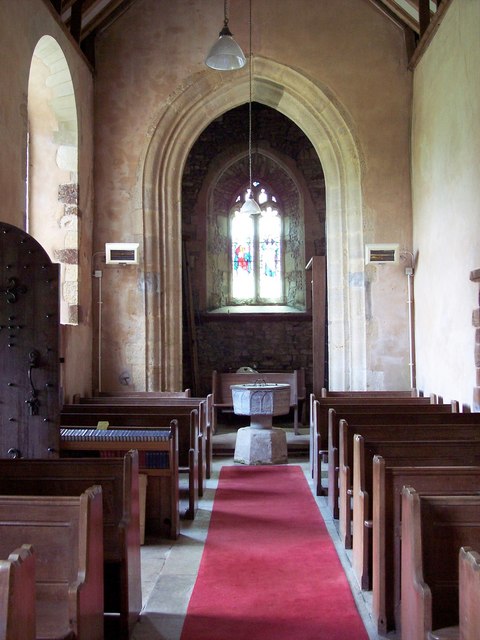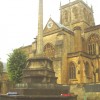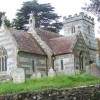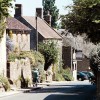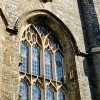Uncategorized
The Great Fire at Blandford – 1731
On June 4th at about two o’clock in the afternoon, two hundred and eighty years ago, the cry of “FIRE!” was heard in the streets of Blandford. People stepped out from their businesses, some put down their drinks and others were called from their pleasures to see what all the commotion was about. They had no idea that by the end of the day their town would be burnt to the ground, the events of the day forever etched in history as the Great Fire of Blandford 1731.
The fire started outside of a soap boiler’s house when sparks fell from a chimney on to the thatch of a house standing on rising ground at the junction of four streets near the middle of the town. Blandford has a long history of fires: the last serious outbreak in July 1713 was still fresh in the memory of many of the inhabitants. This time they were better prepared and were able to quickly deploy three engines to tackle the blaze, although it soon became apparent these were not going to be enough.
Encouraged by a wind blowing from the north west, the flames with great agility settled on the buildings on the four street corners and from there excitedly raced along the streets swallowing up buildings and contents. Pewter melted and silver turned to dross. By seven in the evening scarcely a house was left untouched.
Townsfolk had grabbed what they could of their possessions and many had run to the church which, standing alone, was still untouched by the early evening. Some rested in the churchyard using tombstones to shield them from the heat. The fire still wanted to play and showed-off, tossing its sparks across the river towards neighbouring hamlets in the parishes of St Mary Blandford and Bryanston.
During the evening it was noticed that there was fire in the church steeple but the people managed to extinguish it only to see it break out again. At about two in the morning and twelve hours after the fire started the flames broke through the roof of the church, melting lead, splitting stones and dissolving the bells before it roared through the building. People raced to the church to salvage their possessions for a second time only to be beaten back by the scorching heat.
It was early morning before the fire abated. It stopped at the east end of the town, which is where the earlier fire of 1713 had started.
Some people were employed to keep watch over the few houses that did avoid the flames while others searched for missing relatives and children. It is thought some sixteen people perished; mostly they were elderly, their blackened remains found in the streets – evidence of the horror they endured.
The following morning plans had to be made to feed all the homeless and supplies were sent in by neighbouring parishes. Four hundred families were burnt out of their homes and barrack type accommodation was built, with thatch being added before winter set-in. These families had lost everything and several hundred pounds was paid out of public funds to help these people survive.
It is said the total loss over and above all insurance amounted to over £84,000. A subscription list was started to relieve the distress in the town. The King and Queen and the Prince of Wales gave £1,300 and generous sums were sent from London, Manchester, Birmingham and other distant towns and cities.
Out of all this devastation and misery arose the splendid Georgian town of Blandford we have today, largely designed and built by the Bastard Brothers.
Puddletown – Church and Parish
Puddletown: small town or large village? The name suggests the former and in earlier times there is no doubting it deserved the rank. Nowadays, with the decline of services and facilities common to all rural areas its role has diminished to a dormitory for Dorchester. The designation large village is more appropriate for a parish of some 7,185 acres.
Puddletown attracted people from the surrounding villages and hamlets and was the commercial hub for this rural and under developed part of Dorset. Only about half of the nearly 1400 inhabitants recorded in the census of 1851 were born there. The town had permission, granted before the reformation, to hold two fairs each year and to hold weekly markets. There was employment for all kinds of craftsmen and tradesmen.
In addition to the several shopkeepers there were three bakers, a couple of butchers, a grocer and a post office complemented by two inns, two pubs or alehouses, six cordwainers (boot and shoe makers), three stonemasons, a cabinet maker, three blacksmiths, a saddler and harness maker, two tailors and two dressmakers, all doing business in the town. Puddletown also had a surgeon and a dentist and the town employed two school mistresses.
The parish church is near the centre of the village. St.Mary’s is a church that has escaped being mucked about by our Victorian ancestors but since the 12th century it has enjoyed its fair share of restoration works. There was a church here in Saxon times but the oldest part of St. Mary’s visible today is a section of the tower, probably no older than the late 12th century. Transepts added in the 13th century, turned the earlier structure cruciform in plan.
Most of the building we see today date from around the beginning of the 15th century when the glorious oak roof was put up. A century later more restoration work saw the roof being raised, the addition of a clerestory, a north aisle, the tower heightened by 20ft with an external staircase built on and the parapet on the tower was added at the same time. The tower’s bell chamber is home to six bells one dating from 1599.
In 1634 the people of Puddletown were to agree to fit out the church with much of the interior furniture and fittings we see here today. New seating, a new pulpit and prayer desk, communion table and rails as well as a new font cover were commissioned. The texts on the walls are from this period.
The unusual tumbler shaped font is from the 12th century decorated with a repeating pattern of acanthus leaves; the octagonal pyramid shaped cover is from 1635. From the same period the magnificent three stage pulpit with tester, the box pews and, the most ambitious addition from this time, the west gallery.
Difficult to believe now but the chancel was a tiny space till restoration works paid for by Revd. J.C. Brymer and completed in 1911. Nowadays, the east end of the nave, the carpeted chancel and the north east chapel make a wide open spaced area contrasting with the nave proper resulting in that appearing a little cluttered by the box pews that are, nevertheless, delightful. The nave has a north arcade of four bays and there is a wide north aisle. There is a south chapel containing tombs from the 13th to 16th centuries, and a south vestry.
By the end of the 19th century the population of Puddletown had fallen by about a third but now, no doubt because of its convenience for the county town, the number of inhabitants is back up to levels not seen for nearly two hundred years.
